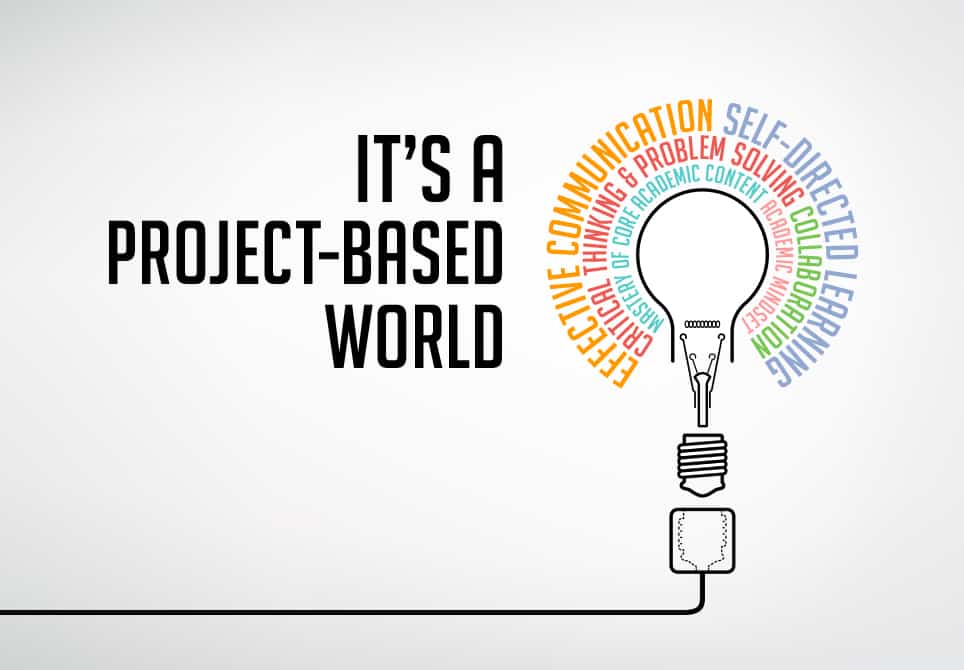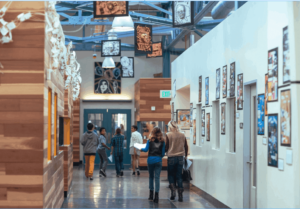Project-Based Learning Can Fuel Tomorrow’s Workforce

By Jim Postl
I’ve been in the business world for over 40 years. The perspective that comes with four decades of experience includes understanding how much has changed…and how much remains the same.
The one immutable, undeniable constant in a successful business is a quality workforce.
Good people are the fuel that makes a business go. If people don’t have the skills they need, not only will they have trouble carving out a fulfilling career, but their employers won’t have the workers they need to be productive.
Sadly, that exact scenario is beginning to unfold across the country.
We’re in the midst of a “skills gap” crisis. That means there are more job openings than there are people qualified to fill those jobs.
Without workers who have the training and education to meet the needs of employers, positions go unfilled (or are filled by less-than-ideal candidates). A skills gap disrupts operations and hamstrings productivity.
I’m watching this crisis unfold in my home state of Texas. Research highlighted by the business leader organization ReadyNation shows how dire the situation is: By 2020, 62 percent of jobs in Texas will require some form of postsecondary education. However, only 55 percent of our state’s workers have that level of education. That seven-percent gap translates to nearly 338,000 jobs that could go unfilled because our workers do not have the level of education employers will need.
This isn’t just a Texas problem. This is an American problem.
Nationwide, 65 percent of job openings by 2020 will require some kind of postsecondary education. Only 60 percent of the American workforce hits that mark. This means that, if trends don’t change, that five-percent gap equates to approximately 2.75 million jobs that may go unfilled.
Making matters worse is the reality that the skills gap is particularly pronounced in “STEM” fields (science, technology, engineering and mathematics), which is a major growth sector. The expansion of the STEM sector only serves to heighten the urgency of finding a way to close the skills gap.
That means a lot to me personally, because I spent part of my career in the energy industry, which relies heavily on STEM employees. I know first-hand that an inadequate STEM workforce will mean a weakened economy for energy and many, many other industries.
We have to be able to help students get the tools they need to flourish in the high-demand jobs of today and tomorrow. Thankfully, we have solutions at our disposal that can help do just that.
We know that career and technical education (CTE) programs can often be the best way for students to receive the training that STEM and other specialized fields require. Meshing wonderfully with CTE education is a research-supported model called “deeper learning.”
Deeper learning stresses the “executive functioning” skills that today’s employers value most. These include skills such as collaborating well, thinking critically, incorporating feedback into work product, problem-solving, communicating effectively and knowing and mastering core academic content.
More specifically, project-based learning is a centerpiece of deeper learning. Deeper learning gives students real-world know-how, often by creating direct connections between the classroom and workplace, with businesses and community partners frequently offering direct support for such programs.
One example of deeper learning and project-based learning in action is Manor New Tech High School. Located just a couple of hours west of my hometown of Houston, Manor New Tech is part of a national network of STEM-focused high schools that use student-created projects as the foundation of a practical education.
Students are responsible for generating actual work product through project-based assignments. They collaborate with each other and with faculty in traditional and virtual ways. New Tech students are prepared simultaneously for higher education and future careers through this exciting and innovative learning method.
Even better, the data suggests that deeper learning gets results. As of 2013, New Tech students were graduating six percent above the national rate. They also improved their performance on the College and Work Readiness Assessment by 75 more points between ninth and twelfth grade than students in other schools.
Furthermore, research on deeper learning and project-based “career academies” across the country showed that students were twice as likely as non-participating students to be working in the engineering, media, and computer technology sectors eight years after they graduated.
Deeper learning, including project-based learning, reflects the realities of the modern, global marketplace. Employers need workers who possess executive-functioning skills, as well as the practical knowledge that comes with career and technical education. We also know that the 21st-century economy increasingly relies on a project-centric approach, which is why a curriculum that embraces project concepts better prepares students for the workplace.
We’re starting to see legislative progress on this front. The bipartisan Improving Career and Technical Education for the 21st Century Act, which would reauthorize federal support for career and technical education programs in Texas and nationwide, was recently passed unanimously by the House Committee on Education and the Workforce.
This legislative proposal included many components that advance deeper-learning education. It also stressed educational partnerships that align secondary and postsecondary institutions, employers, and career and technical education programs to meet local and regional labor needs now and in the future, meaning students can pursue a career path equipped with the knowledge of where job opportunities exist in their local community.
This is a great first step, but there’s more work to do.
Not only does Congress need to complete the reauthorization of the Perkins Career and Technical Education Act with an emphasis on deeper learning, but all of us in the business community and beyond need to make sure that our education system gives kids deeper learning and project-based opportunities.
Our economy needs workers with the skills and expertise fostered by innovative educational models. Embracing those models will help ensure that we’ll have the supply of good, qualified people necessary to close our skills gap and preserve our economic success.
This blog is part of “It’s a Project-Based World” series. To learn more and contribute a guest post for the series, see the Project-Based World page. Join in the conversation at #projectbased.
For more, see:
- Introducing the ‘Selfie’ Generation to the Real World
- What Powers Project-Based Learning? New Technology Provides the Answer
- Students and Employers Benefit in Real World PBL
Jim Postl is the former President & CEO of Pennzoil-Quaker State, the former CEO of Nabisco International and a member of ReadyNation.
Stay in-the-know with all things EdTech and innovations in learning by signing up to receive the weekly Smart Update.






0 Comments
Leave a Comment
Your email address will not be published. All fields are required.